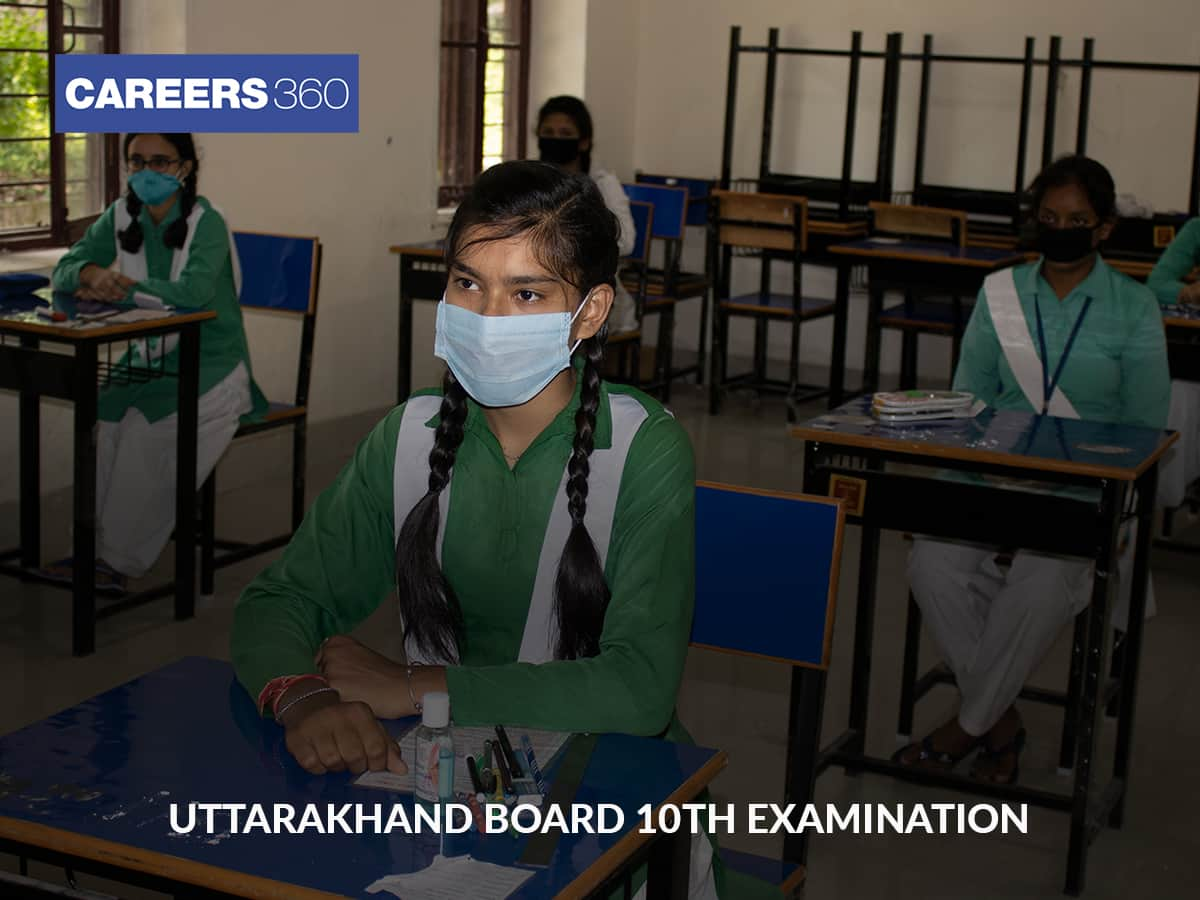NEET/JEE Coaching Scholarship
Get up to 90% Scholarship on Offline NEET/JEE coaching from top Institutes
UK Board 10th Exams 2025- The Uttarakhand Board of School Education (UBSE) conducts Uttarakhand Board 10th class exams, every year. Students who have passed class 9 and are studying class 10 in a school recognized by the UK board can apply for UBSE 10th exams. The application process for UK board 10th is held in offline mode through respective schools. Here are the highlights of the UK board 10th exams 2025:
| Full Exam Name | Uttarakhand Board 10th examination |
| Short Exam Name | UK Board 10th |
| Conducting Body | Uttarakhand Board of School Education |
| Frequency Of Conduct | Once a year |
| Exam Level | Matriculate |
| Languages | English +1 more |
| Mode Of Application | offline |
| Application Fee | Offline : 370 |
| Mode Of Exam | offline |
| Exam Duration | 3 Hours |
UK Board 10th Uttarakhand Board 10th examination (session 2025)
Read More
Uttarakhand Board of School Education or UBSE declared the UK board 10th result 2025 on April 19, 2025, online at uaresults.nic.in. Students need to enter their UK board 10th 2025 roll number to check the result. They can also get UK board's 10th result 2025 through the SMS facility provided by the Board.
Here are the steps to download the UK Board 10th Result 2025:

Also, read Courses after 10th
After completing 10th grade, students have a wide range of course options to choose from. This eBook provides comprehensive details about the various courses available after 10th.
Download EBookUK board 10th marking scheme 2025
Subjects | Internal assessment | Theory marks | Practicals marks | Total marks |
Mathematics | 20 | 80 | - | 100 |
Science | - | 60 | 20+20 | 100 |
English | - | 100 | - | 100 |
Social Science | 20 | 80 | - | 100 |
Home Science | - | 75 | 25 | 100 |
Sanskrit | - | 100 | - | 100 |
English: Unit 02
English: Unit 03
Social science: Unit 01
Social science: Unit 02
Social science: Unit 03
Social science: Unit 04
Social science: Unit 05
Science: Unit 01
Science: Unit 02
Science: Unit 03
Science: Unit 04
Science: Unit 05
Mathematics: Unit 01
Mathematics: Unit 02
Mathematics: Unit 03
Mathematics: Unit 04
Mathematics: Unit 05
Mathematics: Unit 06
Mathematics: Unit 07
Home science: Unit 01
Home science: Unit 02
Home science: Unit 03
Home science: Unit 04
Home science: Unit 05
Home science: Unit 06
Home science: Unit 07
Home science: Unit 08
Home science: Unit 09
Home science: Unit 10
Elements of business: Unit 01
Elements of business: Unit 02
Elements of business: Unit 03
Elements of business: Unit 04
Elements of book keeping and accountancy: Unit 01
Elements of book keeping and accountancy: Unit 02
Elements of book keeping and accountancy: Unit 03
Elements of book keeping and accountancy: Unit 04
Information technology: Unit 01
Information technology: Unit 02
Information technology: Unit 03
Read more - Short term courses after 10th
05947254275
Yes, students can also check their result via SMS.
Students can download Uttarakhand Board class 10 date sheet 2025 from official website at ubse.uk.gov.in.
UK board 2025 10th date sheet was released on January 4, 2025.
The UK board 2025 exam for Class 10 was held from February 21 to March 11, 2025.
Students must obtain at least 33% in each subject to pass the exams
Cover all topics of the syllabus at least 1 or 2 months before exams and solve previous year's papers to qualify board exams with good marks.

Register for ALLEN Scholarship Test & get up to 90% Scholarship

Get up to 90% Scholarship on Offline NEET/JEE coaching from top Institutes

This ebook serves as a valuable study guide for NEET 2025 exam.

This e-book offers NEET PYQ and serves as an indispensable NEET study material.
As per latest 2024 syllabus. Physics formulas, equations, & laws of class 11 & 12th chapters
As per latest 2024 syllabus. Chemistry formulas, equations, & laws of class 11 & 12th chapters